Judgment at Nuremberg
8.6 /10 1 Votes
90% Rotten Tomatoes Genre Drama, History, War Duration Language English | 8.3/10 IMDb | |||||||||||||||||||||||||||||||||
 | ||||||||||||||||||||||||||||||||||
Release date December 19, 1961 (1961-12-19) Nominations Academy Award for Best Picture Cast (Chief Judge Dan Haywood), (Dr. Ernst Janning), (Col. Tad Lawson), (Mrs. Bertholt), (Hans Rolfe), (Mrs. Irene Hoffman Wallner) Similar movies Life Is Beautiful , Schindler's List , Saving Private Ryan , 12 Angry Men , Max Manus: Man of War , The Pianist Tagline The event the world will never forget. | ||||||||||||||||||||||||||||||||||
Judgment at nuremberg official trailer 1 burt lancaster movie 1961 hd
Judgment at Nuremberg is a 1961 American courtroom drama film directed by Stanley Kramer, written by Abby Mann and starring Spencer Tracy, Burt Lancaster, Richard Widmark, Maximilian Schell, Werner Klemperer, Marlene Dietrich, Judy Garland, William Shatner, and Montgomery Clift. Set in Nuremberg in 1948, the film depicts a fictionalized version of the Judges' Trial of 1947, one of the twelve U.S. military tribunals during the Subsequent Nuremberg trials.
Contents
- Judgment at nuremberg official trailer 1 burt lancaster movie 1961 hd
- Maximilian schell in judgment at nuremberg world s guilt
- Background
- Plot
- Accolades
- Soundtrack
- Adaptations
- Reception
- Release
- References
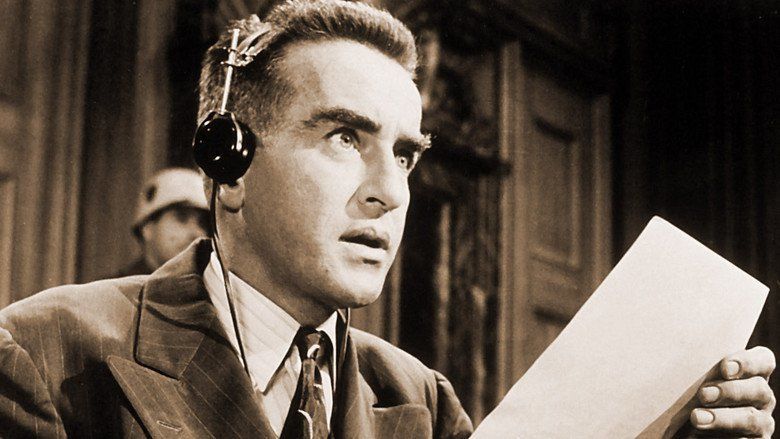
The film centers on a military tribunal led by Chief Trial Judge Dan Haywood (Tracy), before which four German judges and prosecutors (as compared to 16 defendants in the actual Judges' Trial) stand accused of crimes against humanity for their involvement in atrocities committed under the Nazi regime. The film deals with non-combatant war crimes against a civilian population, the Holocaust, and examines the post-World War II geopolitical complexity of the actual Nuremberg Trials. An earlier version of the story was broadcast as a television episode of Playhouse 90. Schell and Klemperer played the same roles in both productions.
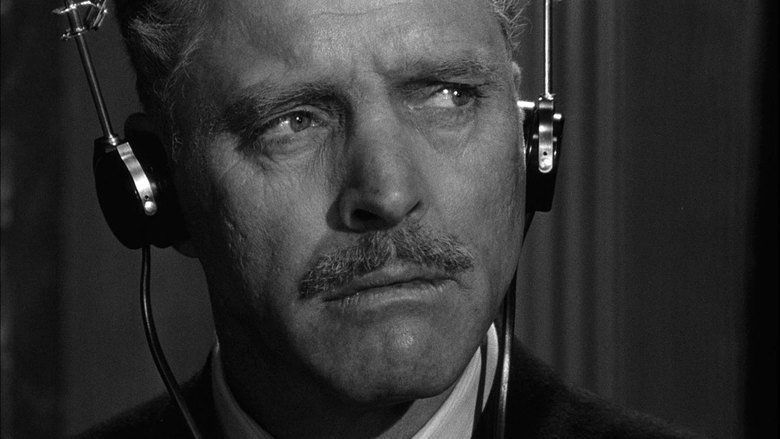
In 2013, Judgment at Nuremberg was selected for preservation in the United States National Film Registry by the Library of Congress as being "culturally, historically, or aesthetically significant".

Maximilian schell in judgment at nuremberg world s guilt
Background

The film's events relate principally to actions committed by the German state against its own racial, social, religious, and eugenic groupings within its borders "in the name of the law" (from the prosecution's opening statement in the film), that began with Hitler's rise to power in 1933. The plot development and thematic treatment question the legitimacy of the social, political and alleged legal foundations of these actions.
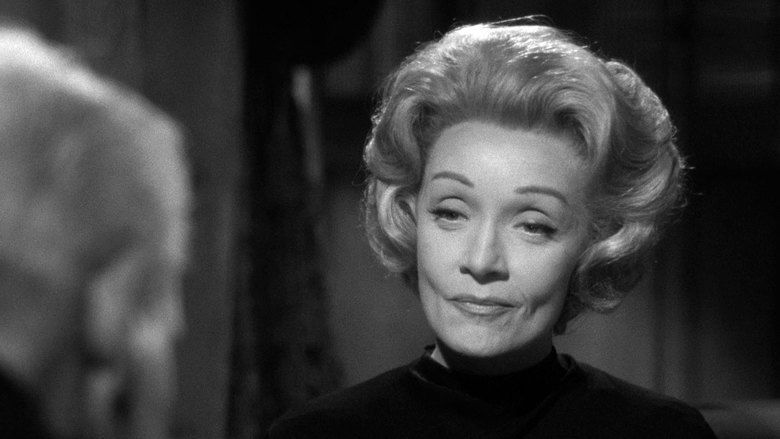
The real Judges' Trial focused on 16 judges and prosecutors who served before and during the Nazi regime in Germany and who either passively, actively, or in a combination of both, embraced and enforced laws that led to judicial acts of sexual sterilization and to the imprisonment and execution of people for their religions, racial or ethnic identities, political beliefs and physical handicaps or disabilities.
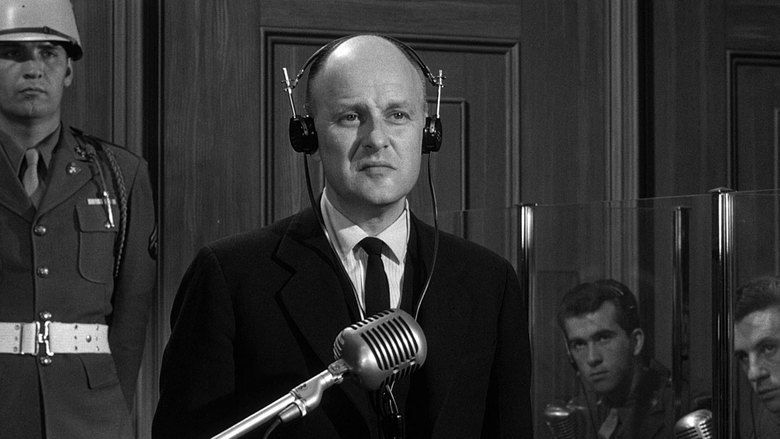
A key thread in the film's plot involves a "race defilement" trial known as the Feldenstein case. In this fictionalized case, based on the real life Katzenberger Trial, an elderly Jewish man had been tried for having a "relationship" (sexual acts) with an Aryan (German) 16-year-old girl, an act that had been legally defined as a crime under the Nuremberg Laws, which had been enacted by the German Reichstag. Under these laws, the man was found guilty and was put to death in 1935. Using this and other examples, the movie explores individual conscience, collective guilt, and behavior during a time of widespread societal immorality.

The film is notable for its use of courtroom drama to illuminate individual perfidy and moral compromise in times of violent political upheaval; it was one of the first films not to shy from showing actual footage filmed by American and British soldiers after the liberation of the Nazi concentration camps. Shown in court by prosecuting attorney Colonel Tad Lawson (Richard Widmark), the scenes of huge piles of naked corpses laid out in rows and bulldozed into large pits were considered exceptionally graphic for a mainstream film of its day.
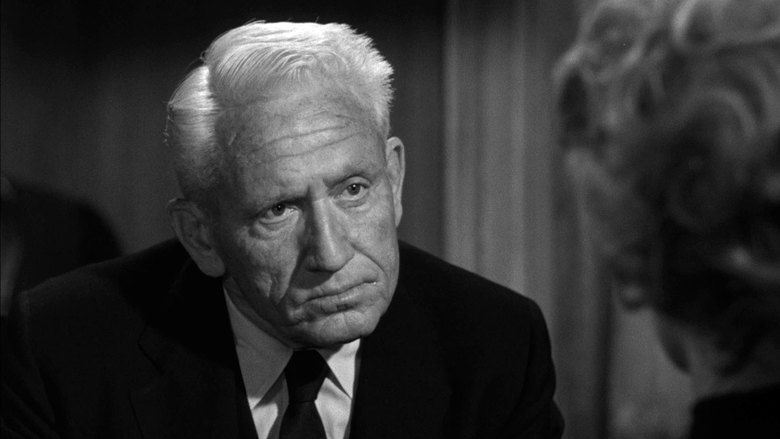
The film bridges the gap between English-speaking and German-speaking persons within the courtroom by presenting the film in English, but implying use of the German language through headphones used by characters whose native language is the opposite of that spoken.
Plot
Judgment at Nuremberg centers on a military tribunal convened in Nuremberg, Germany, in which four German judges and prosecutors stand accused of crimes against humanity for their involvement in atrocities committed under the Nazi regime. Judge Dan Haywood (Spencer Tracy) is the Chief Trial Judge of a three-judge panel that will hear and decide the case against the defendants. Haywood begins his examination by trying to learn how the defendant Ernst Janning (Burt Lancaster) could have sentenced so many people to death. Janning, it is revealed, is a well-educated and internationally respected jurist and legal scholar. Haywood seeks to understand how the German people could have turned blind eyes and deaf ears to the crimes of the Nazi regime. In doing so, he befriends the widow (Marlene Dietrich) of a German general who had been executed by the Allies. He talks with a number of Germans who have different perspectives on the war. Other characters the judge meets are US Army Captain Byers (William Shatner), who is assigned to the American party hearing the cases, and Irene Hoffmann (Judy Garland), who is afraid to provide testimony that may bolster the prosecution's case against the judges.
German defense attorney Hans Rolfe (Maximilian Schell) argues that the defendants were not the only ones to aid, or at least turn blind eyes to, the Nazi regime. He also suggests that the United States has committed acts just as bad or worse as those the Nazis perpetrated. He raises several points in these arguments, such as: U.S. Supreme Court Justice Oliver Wendell Holmes, Jr.'s support for the first eugenics practices (see Buck v. Bell ); the German-Vatican Reichskonkordat of 1933, which the Nazi-dominated German government exploited as an implicit foreign recognition of Nazi leadership; Stalin's part in the Nazi-Soviet Pact of 1939, which removed the last major obstacle standing in the way of Germany's invasion and occupation of western Poland, initiating World War II; and the atomic bombings of Hiroshima and Nagasaki in the final stage of the war in August 1945.
Janning, meanwhile, decides to take the stand for the prosecution, stating that he is guilty of the crime he is accused of: condemning to death a Jewish man of "blood defilement" charges—namely, that the man slept with a 16-year-old Gentile girl—when he knew there was no evidence to support such a verdict. During his testimony, he explains that well-meaning people like himself went along with Hitler's anti-Semitic racism policies out of a sense of patriotism, even though they knew it was wrong because of the effects of the post-World War I Versailles Treaty.
Haywood must weigh considerations of geopolitical expediency and ideals of justice. The trial takes place against the background of the Berlin Blockade, and there is pressure to let the German defendants off lightly so as to gain German support in the growing Cold War against the Soviet Union. All four defendants are found guilty and sentenced to life in prison.
Haywood visits Janning in his cell. Janning affirms that Haywood's decision was just, but asks him to believe that he and the other defendant judges never desired the mass murder of innocents. "We never knew," he insists, "that it would come to that." Judge Haywood replies, "Herr Janning, it came to that the first time you sentenced a man to death you knew to be innocent." Haywood departs; a title card informs the audience that, of 99 defendants sentenced to prison terms in Nuremberg trials that took place in the American Zone, none were still serving their sentences as of the film's 1961 release.
Accolades
The film was nominated for eleven Academy Awards. Maximilian Schell won the award for Best Actor, and Abby Mann won in the Best Adapted Screenplay category. The remaining nominations were for Best Picture, Stanley Kramer for Best Director, Spencer Tracy for Best Actor, Montgomery Clift for Best Supporting Actor, Judy Garland for Best Supporting Actress, Best Art Direction-Set Decoration, Black-and-White, Best Cinematography, Black-and-White, Best Costume Design, Black-and-White, and Best Film Editing. Stanley Kramer was given the prestigious Irving G. Thalberg Memorial Award. This is one of the few times that a film had multiple entries in the same category (Tracy and Schell for Best Actor). Many of the big name actors who appeared in the film did so for a fraction of their usual salaries because they believed in the social importance of the project.
In June 2008, the American Film Institute revealed its "Ten Top Ten" after polling over 1,500 people from the creative community. Judgment at Nuremberg was acknowledged as the tenth best film in the courtroom drama genre. Additionally, the film had been nominated for AFI's 100 Years...100 Movies.
Soundtrack
Adaptations
In 2001, a stage adaptation of the film was produced for Broadway, starring Schell (this time in the role of Ernst Janning) and George Grizzard, with John Tillinger as director.
Reception
The film grossed $6 million in the United States, and $10 million in world-wide release. Kramer's film received positive reviews and was liked as a straight reconstruction of the famous trials of Nazi war criminals. The cast was especially praised, including Tracy, Lancaster, Schell, Clift and Garland. The film's release was perfectly timed as its subject coincided with the then trial and conviction in Israel of Nazi official Adolf Eichmann.
Release
Judgment at Nuremberg was released in theatres on December 19, 1961. The film was released on DVD special edition on September 7, 2004. On Blu-ray the film was released in two editions – Hollywood Gold Series (April 30, 2014) and Limited Edition to 3000 (November 11, 2014).
References
Judgment at Nuremberg WikipediaJudgment at Nuremberg IMDbJudgment at Nuremberg Rotten TomatoesJudgment at Nuremberg themoviedb.org
